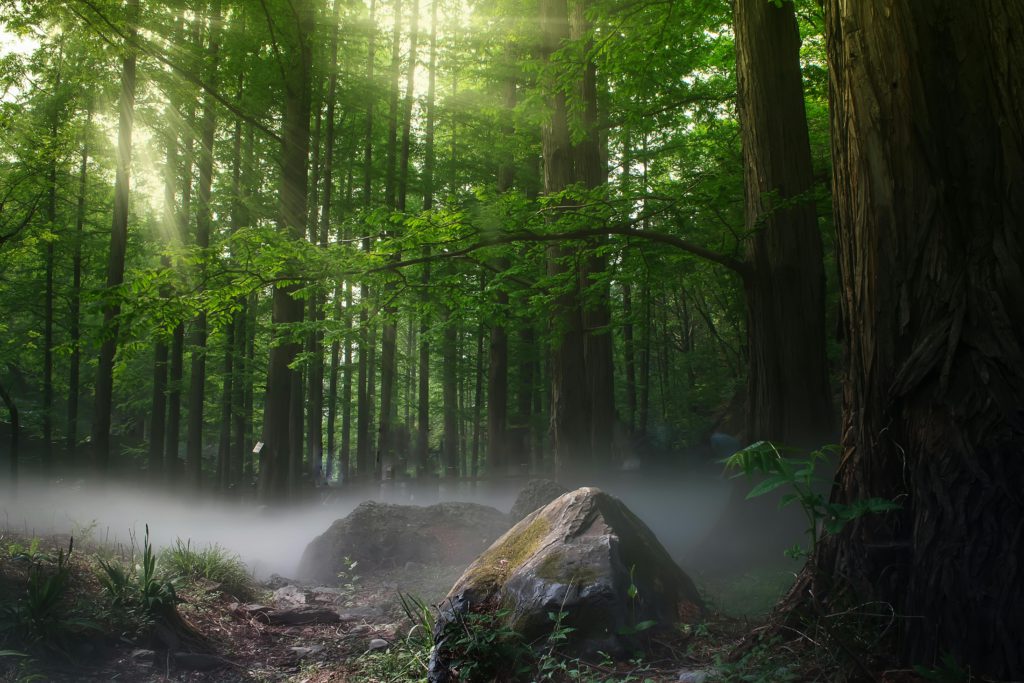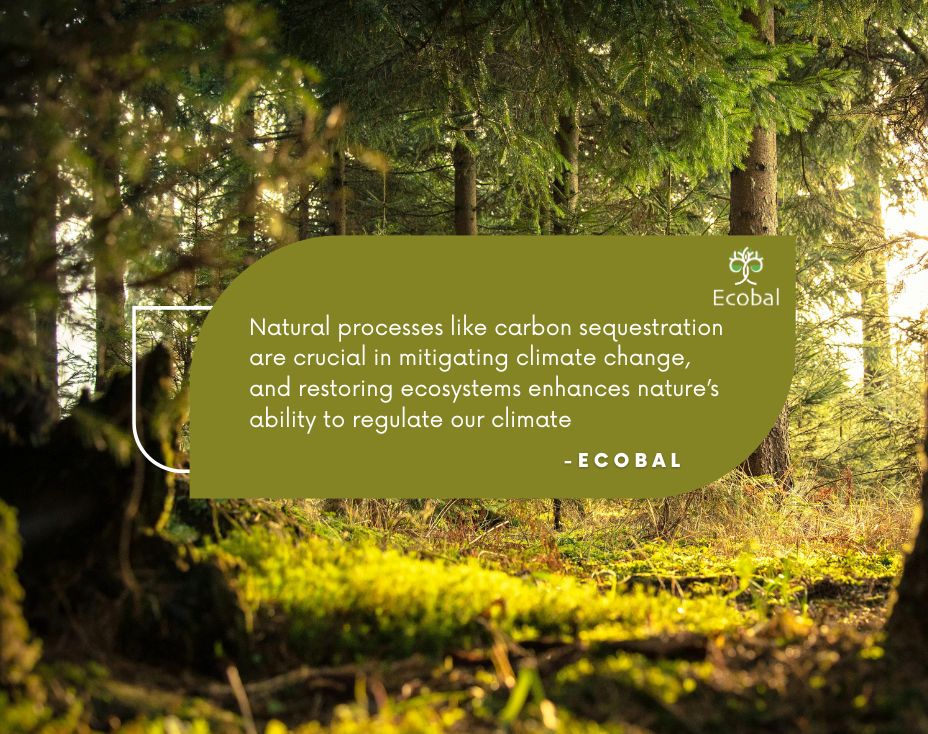Nature’s Role in Climate Regulation: Examining How Natural Processes Like Carbon Sequestration Help Mitigate Climate Change
Nature plays a crucial role in regulating Earth’s climate by absorbing, storing, and releasing carbon dioxide (CO₂) and other greenhouse gases. Carbon sequestration, in particular, is a key natural process that helps mitigate climate change by capturing atmospheric carbon and storing it in various ecosystems. This article explores how nature regulates the climate through these processes, supported by scientific evidence.

Carbon Sequestration by Forests and Vegetation
Forests are vital carbon sinks, absorbing nearly one-third of global CO₂ emissions annually.
- Global Carbon Sequestration: Terrestrial ecosystems, including forests, grasslands, and wetlands, sequester large amounts of CO₂, offsetting about 30% of human-caused carbon emissions.
- Forests as Carbon Sinks: Forests alone store about 80% of the planet’s terrestrial carbon. Mature forests, such as the Amazon Rainforest, play a particularly important role in this process by absorbing CO₂ and releasing oxygen.
- Afforestation and Reforestation: Large-scale afforestation and reforestation projects, such as those undertaken in China, have sequestered nearly 400 million tons of CO₂ over the past 40 years, significantly increasing global carbon sequestration capacity.
Soil Carbon Sequestration
Soils serve as another important carbon reservoir, storing more carbon than the atmosphere and vegetation combined. This is achieved through the accumulation of organic matter derived from plant and microbial activity.
- Soil Carbon Stock: Globally, soils store approximately 2,500 gigatons of carbon (GtC), more than twice the amount found in the atmosphere. Agricultural practices focusing on soil health, such as no-till farming and agroforestry, can significantly increase this storage capacity.
Wetlands, Peatlands, and Coastal Ecosystems
Wetlands, peatlands, mangroves, and seagrasses are known as “blue carbon” ecosystems, which are highly effective at capturing and storing carbon.
- Wetlands: Despite covering only 3% of Earth’s land area, wetlands store around 30% of the world’s soil carbon.
- Peatlands: Peatlands are especially crucial, holding approximately 42% of all soil carbon globally. Learn more about peatlands and their role in carbon storage.
- Mangroves and Seagrasses: Coastal ecosystems, such as mangroves and seagrass meadows, capture carbon at rates up to 10 times faster than terrestrial forests, making them essential for mitigating climate change.
The Role of Oceans
The oceans are the largest carbon sink on Earth, absorbing roughly 25% of global CO₂ emissions annually. They perform this function through two key mechanisms: the biological pump and the solubility pump.
- Biological Pump: Phytoplankton absorb CO₂ for photosynthesis, and when they die, they sink to the ocean floor, trapping carbon for centuries.
- Solubility Pump: Cold water absorbs CO₂, which is then stored in the deep ocean, effectively removing it from the atmosphere for extended periods.
The Role of Ecosystem Restoration in Climate Action
Ecosystem restoration significantly enhances nature’s ability to mitigate climate change. Global initiatives such as the UN Decade on Ecosystem Restoration aim to restore 350 million hectares of degraded ecosystems by 2030, with the potential to sequester up to 26 gigatons of carbon.
- Restoration and Climate Mitigation: Research suggests that restoring degraded forests, wetlands, and grasslands could remove between 5-8 gigatons of CO₂ annually by 2050, which would account for 15-30% of global emissions reductions.
- Natural Climate Solutions (NCS): NCS, including afforestation, peatland restoration, and sustainable land management, could contribute up to 37% of the emissions reductions needed to meet Paris Agreement targets by 2030.
Why It Matters for Ecobal
At Ecobal, we are committed to advancing CO₂ and CH₄ sequestration technologies and approaches. By implementing solutions like ultra-fast CO₂ hydrate formation, we transform former agricultural and barren lands into thriving ecosystems. This helps us not only effectively sequester CO₂ and CH₄ but also promote sustainable practices and contribute to large-scale environmental restoration.
Ecobal’s Mission
- Raise awareness and establish authority on the ecological health of rural and natural landscapes.
- Monetize ecosystem services to showcase the economic value of nature.
- Utilize natural ecosystems as effective carbon sinks for CO₂ and CH₄ sequestration.
- Improve soil health through managing soil microbiota and fauna.
- Restore biodiversity by reintroducing and conserving native species.
- Tokenize CO₂ to create economic opportunities while driving sustainability.
About the Author
This article is authored by Dr. Amisalu Milkias, a CO₂ Project Specialist at Ecobal. With a Ph.D. in Restoration Ecology and numerous publications, Dr. Milkias is an expert in nature-based solutions, carbon sequestration, and land restoration. His research has significantly contributed to advancing our understanding of climate resilience and sustainable ecological practices.


